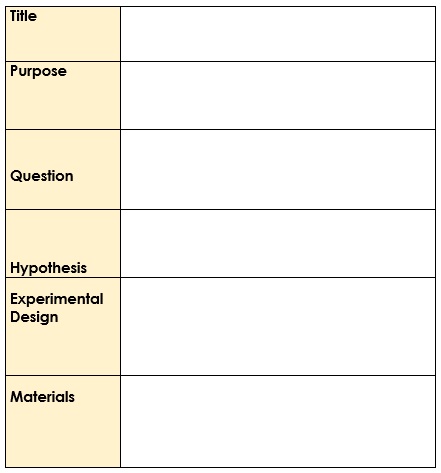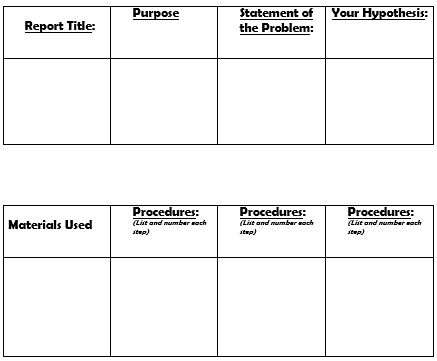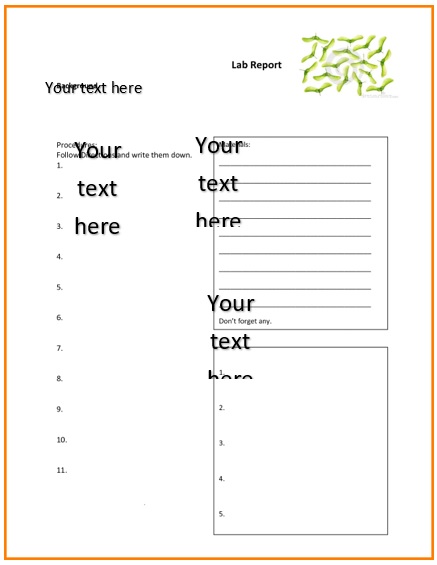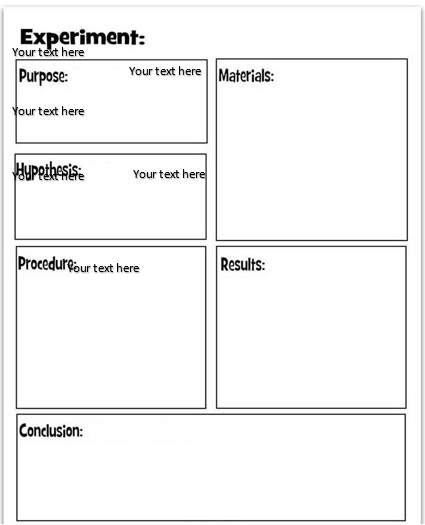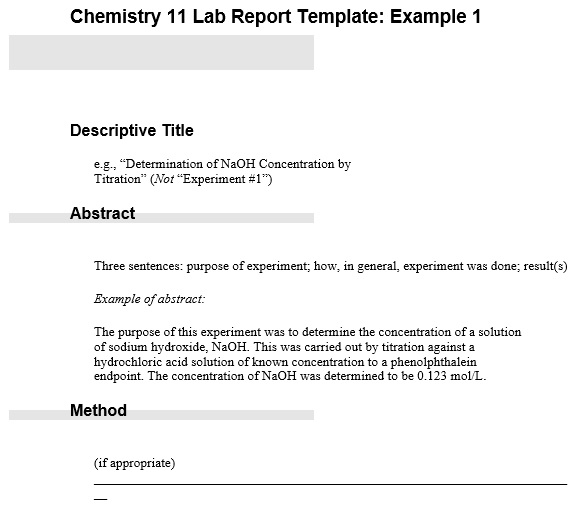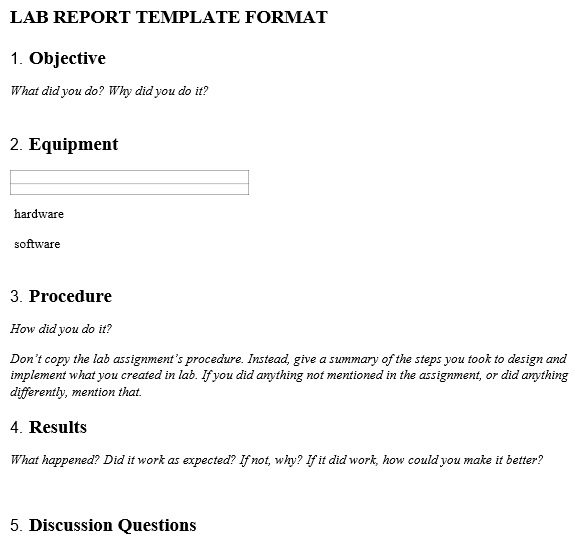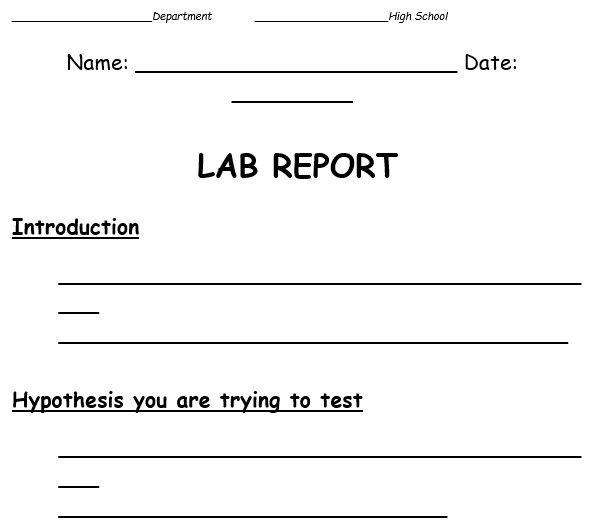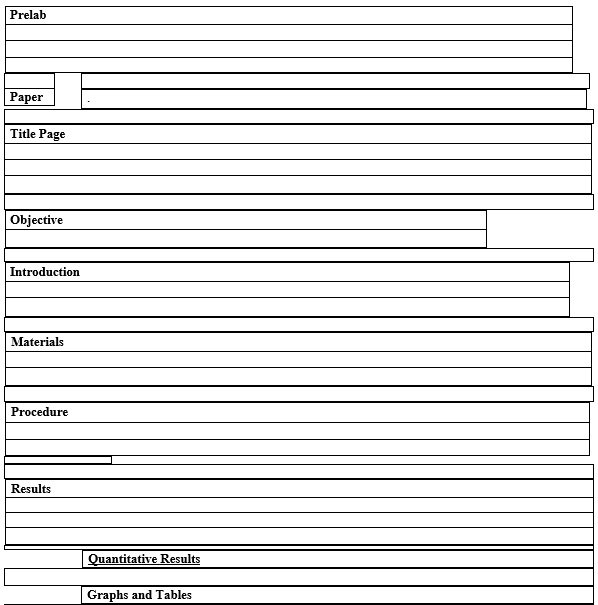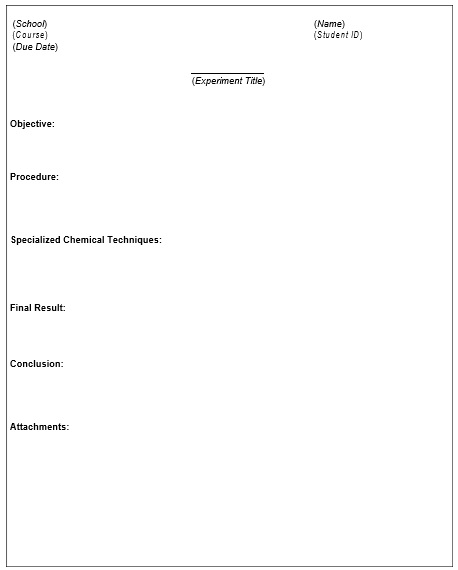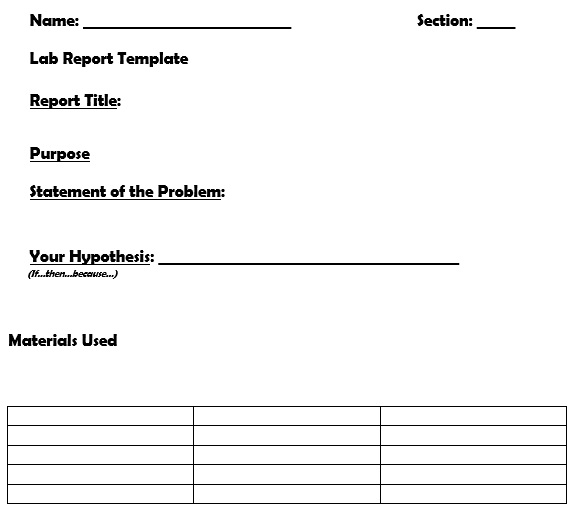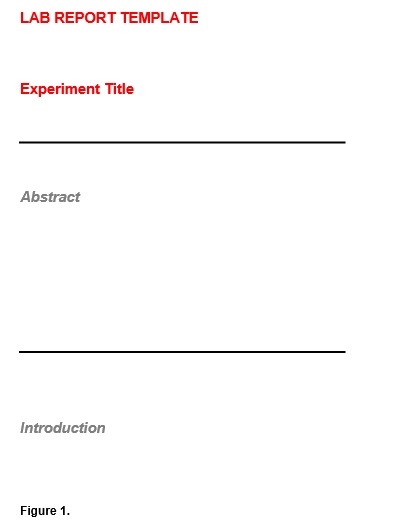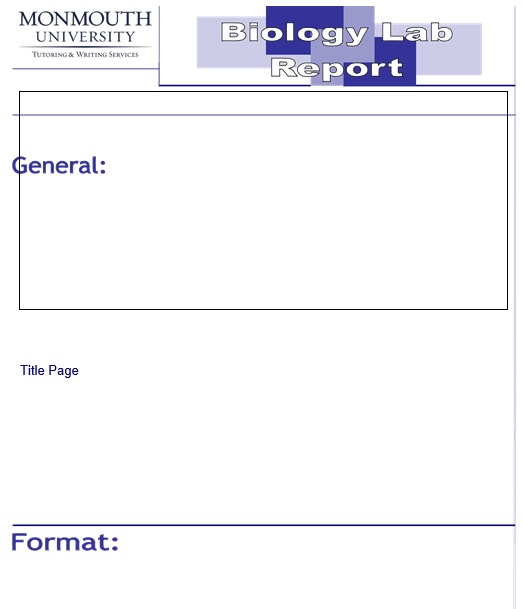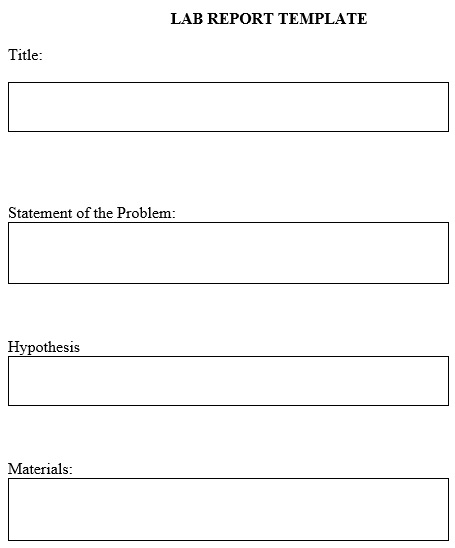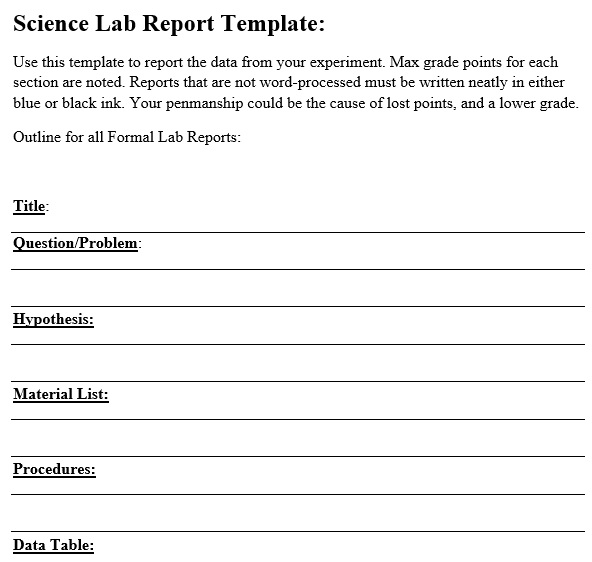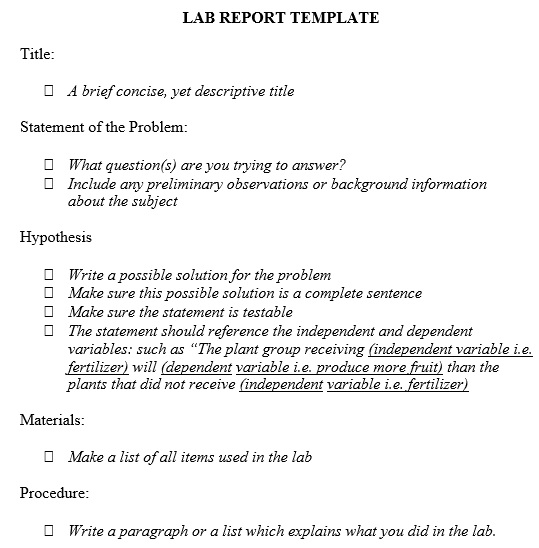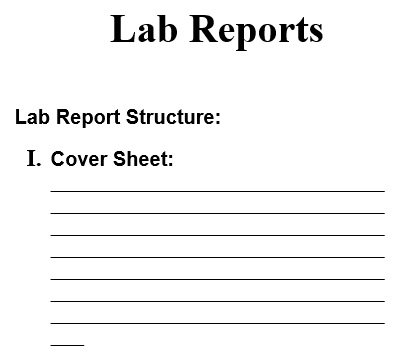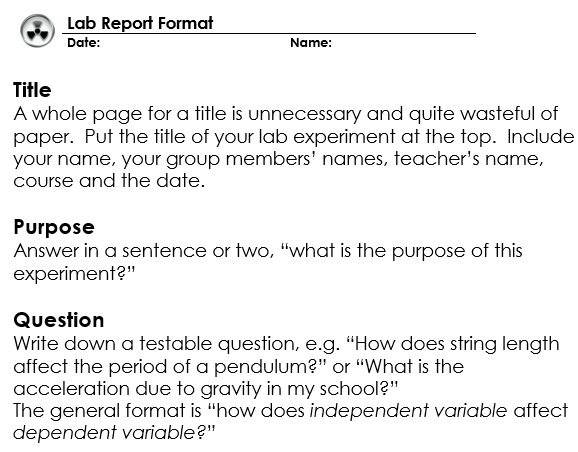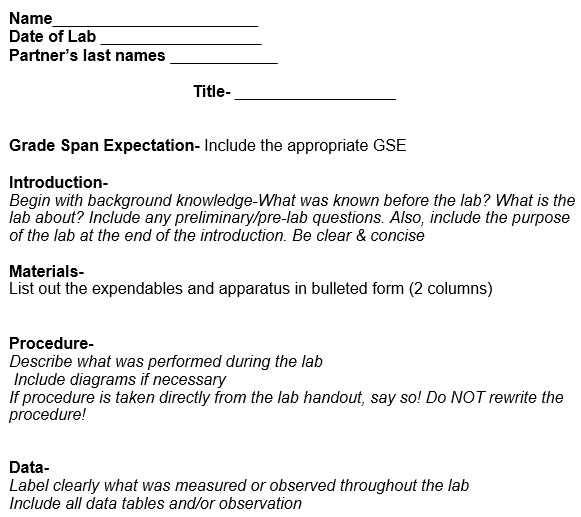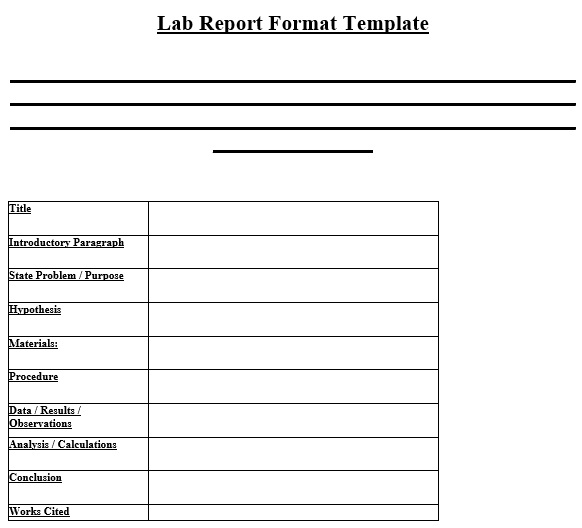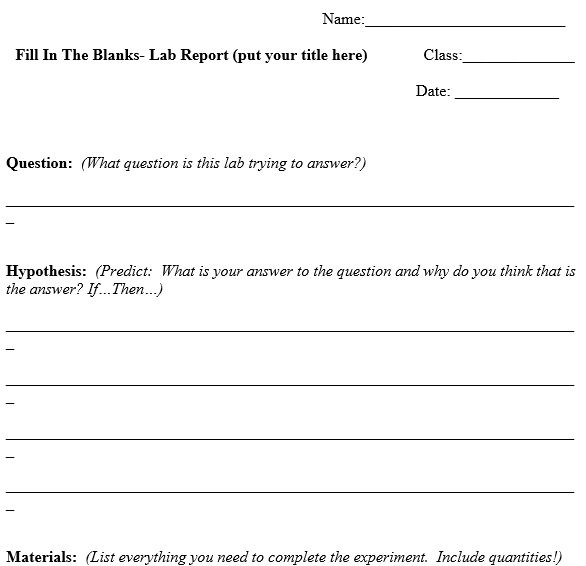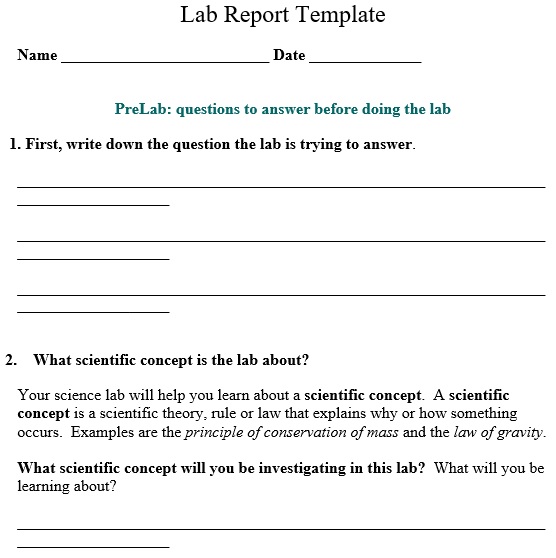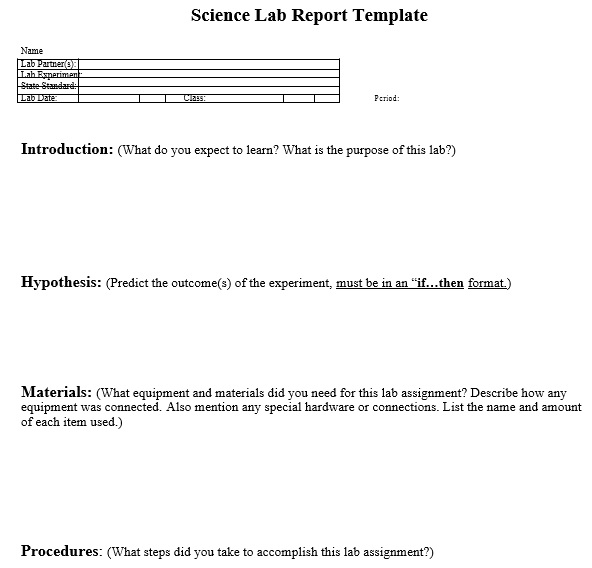A lab report template is a document used to explain and examine a laboratory experiment that investigates a scientific concept. Generally, students have assigned the lab report to be able to;
- Do a scientific research
- Formulate a hypothesis that is regarding a certain problem or stimulus
- To justify the formulated hypothesis, review related literature and written works
- Apply related statistics in order to test your hypothesis
- Analyze various theoretical explanations
- Assess research methodically and objectively
- To communicate clearly
Table of Contents
Different types of formal lab report templates:
There are two different types of lab report templates;
Lab report template
This type of report usually pays attention to one problem or stimulus. They have a narrow scope and have different formats. It’s up to you whether you make a report by putting details on blank lines in a worksheet or you can make it more comprehensive by including all parts. Students can make different reports for different subjects like;
- A chemistry lab report template
- A physics lab report template
- A science lab report template
- A biology lab report template
Project report templates
This type of report deals with a broad understanding of a specific topic or subject and has broader scope. There is no need to record the results of an experiment while making this type of report. Rather than this, you can give explanation of a design or a concept.
Parts of a lab report template:
Here are the basic parts of a lab report template;
The title of the report
This part should specify the following information;
- What the whole document is about
- What you are studying or experimenting on
- The environmental factors that are to be manipulated
- The parameter/s that are measured
- The specific stimuli
You should just use concise terms and don’t add any unnecessary terms.
The abstract
The abstract is the reduced or summarized version of the whole report. Don’t make it too lengthy and keep it around 250 words only. The abstract makes you able to quickly understand the purpose, the methods, the results and the importance of your research. You don’t have to read the whole report. You may also like Doctor Prescription Pad Templates.
Furthermore, the abstracts that are published in academic journals are very effective. According to the rest of the report, order the content of your abstract in the same way;
- Begin with a background sentence that would introduce your report
- State the main goal of your report and the hypothesis
- In your methodology, make a description of the key points
- Quantitatively and qualitatively, summarize your results
The purpose or introduction
Next, you have to explain the purpose or objective of your report. Begin with the problem you are trying to solve. After that, give some background information about it that should be direct, concise and easy to understand.
It should contain a short review of previous literature that is related to your issue. Also, give a description on how your experiment will assist you in making clear or add to the existing knowledge. In the final statement of the introduction, include a purpose statement that would define the question which your experiment is meant to answer. You may have to use different resource materials in order to build the foundation of your introduction or purpose.
Materials and methodology
This section is all about how and when you had done your work. It should contain the experimental design, materials, equipment and apparatus that are used in the experiment. Additionally, specify the methodology you had used to collect and analyze the data and all other types of control. Here are some pointers for you;
- When making your descriptions, use either a passive voice or an active first person voice.
- Mention all methodology that you have adapted from other sources.
- To explain the experimental setup, make use of illustrations, photographs, and maps.
- The procedures you had altered as compared to the procedures that you had used as a reference, make a description of them.
Findings and results
During presenting the results or findings, without adding any interpretations or conclusions, you just have to write down your observations and all the relevant data. This section would give the structure for the next part of your report, if it is well-written and well-organized.
In addition to this, in the order you’ve made your observations, document all of your findings. You should ensure to use full sentences so that they would be easier to understand. Use diagrams and tables to support the results.
- In describing your results, it would be better to use both worded and numerical data. Also, ensure to use suitable terminologies.
- When describing your findings, use the past tense.
- Lengthy calculations or results can be included to your report as an appendix.
Discussion
As its name implies, here you have to discuss your results and findings. Describe that how your research or experiment relevant to the previous work had been done in the same field. You also have to make descriptions regarding what you think your results mean.
- Create an explanation of the relations and patterns that had emerged.
- Discuss why you had analyzed what you did and how the results happened. Moreover, discuss how it is related to the entire purpose of your experiment.
- Compare your results to the trends that are explained in the published literature and theoretical behavior.
- Ensure that you are always descriptive so that readers will easily understand your discussion part.
- It is the place where you either accept or reject the hypothesis you had written.
Conclusion
Conclusion would be the very last part of your formal lab report template. In the conclusion, restate the purpose, the main results and how these results are essential to the field of study.
Tables and other figures
Tables and other figures are added to report to present data that is more complicated. Here are some pointers for you;
- Diagrams, maps, graphs are referred to as figures while tables are just tables.
- You should number all your tables and figures.
- Also, they should have their own titles that are self-explanatory. This way, they can be understood on their own.
References
The references that you had used throughout your whole research and experimentation, include them. Here are some tips for writing this section;
- At the end of the report, it should be written on a separate page.
- In the reference section, all information that is not originally your must be included.
- All the literature should be referenced which you had used. You should also check SOAP Note Templates.
What to do before writing your lab report?
It can be quite a tedious process to write a formal lab report. Understanding completely everything that you need to know about the whole experiment is the best way to prepare yourself. Here are some tips for you;
- You should do a thorough research about your experiment.
- It would be better to visit your lab and consult with your supervisor. This is because your supervisor have enough knowledge about the experiment or research.
- Never rush into things instead you should plan all steps of the experiment carefully. In order to make sure that you can perform the experiment accurately, think of each step thoroughly.
- You should think about an ideal way to organize your results and findings. You can also make tables and forms to write down the data more effectively.
- Communicate well with everyone if you are working with a group. It would be better that before making decisions, you should consult and ask questions in order to ensure that everything is clear.
- Don’t neglect your audience just because the report is yours or your groups. Anyone can read it so you have to record everything.
How to write a lab report?
There is a lot of steps to make a formal lab report template. Consider the following tips from start to end;
The pre-lab report
- In the introduction, discuss the problem which is being studied or experimented and the related theories.
- Here, you have to summarize your report in a short paragraph. It is suggested to use your own words instead of copying the words from literature.
- State a background sentence that describe why you are doing the experiment, its importance, and some other experiments that have been performed in the past.
- Specify the objective of your experiment, what you want to do, and what you want to achieve.
- The techniques and methodologies that you plan to achieve your goals, explain them.
- You have to keep your introduction direct and concise. If you make the introduction too long, then no one wants to read a report.
- Instead of your introduction, the procedural flowchart of your report can be longer but not more than one page. The flowchart acts as roadmap of the experiment that covers all the steps briefly and it becomes easier to understand.
The In-lab responsibility
- Always write the data with a pen in order to make sure that important information doesn’t get erased.
- Record the data immediately in a notebook or on a piece of paper or in a place where you won’t lose it.
- Don’t throw anything out until you have finalized your report.
- Backup all your results and findings so that you don’t lose any essential details.
- Apart from collecting data, results, and findings, you should also make note of observations.
- You can use your notes to build the content when you are making your report. A key to make a great report is observations.
The Post-lab reports
- Start to recopy everything from the raw data which you had collected in a more organized way. To make the data readable and easy to understand, you can place the data in tables, graphs, and any other type of presentation.
- If there are calculations in your experiment then specify the formulas that you have used to perform these calculations.
- If you are working in a group, different members of your groups try to make calculations make sure that they all arrive at same answer.
- The conclusion of your report is just like your introduction but in conclusion, you just have to summarize everything that you did. Make sure that your conclusion should be short and precise.
- Now, the methodology you had gone through precisely restate it.
- All the results that you had calculated and all of your findings, reiterate them.
- Then, give comments about the results whether they are good or bad.
- Finally, to provide closure to your entire report, write a concluding statement.
- Proofread your report thoroughly and check for any errors and ensure that your spellings and grammar is accurate.
Conclusion:
In conclusion, writing a lab report template can be a tedious process. You should best prepare yourself by completely understand everything you need to about the entire experiment. This is a very useful document that you must use for describing and analyzing laboratory experiments.
FAQS (Frequently Asked Questions)
Here is the format of a lab report;
1- Title Page
2- Abstract
3- Introduction
4- Procedures or Methods
5- Results and Discussion
6- Conclusions
7- Appendices
A lab report is an effective tool used to record and discuss the specific experiment that has been performed in the lab. Details like the materials used, the methods, the results, and a discussion are included in it.

